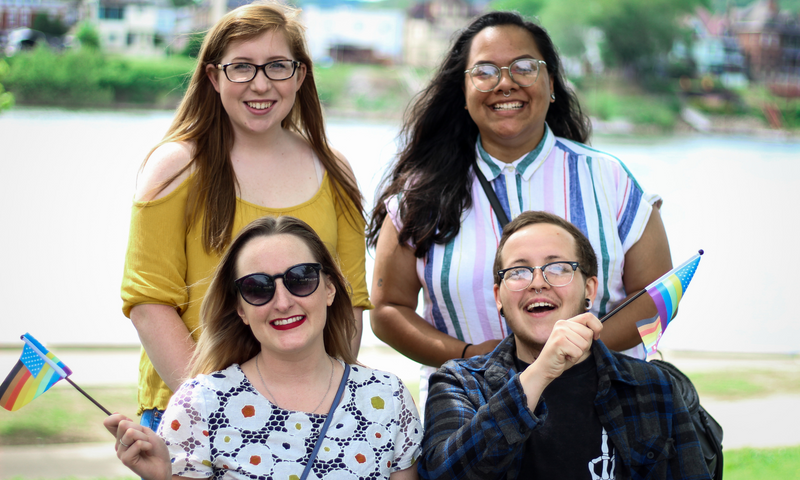International Day Against Homophobia, Biphobia and Transphobia is observed on May 17th as an international day of awareness with coordinated events in 130 plus countries against hate towards gay and transgender communities. The day, May 17th, was chosen since it is the day that the term “homosexuality” was no longer seen as a disease and taken off the International Classification of Diseases of the World Health Organization (WHO) in 1990. That means that up until 33 short years ago the respected WHO saw being gay as a disease. Originally in 2005, it was known as the International Day Against Homophobia and later it evolved to what it’s known as now. Thanks to those who fought to establish this day many other days for the Transgender community’s visibility are now recognized including International Transgender Day of Visibility.
What is the International Transgender Day Of Visibility?
Celebrated every March 31st, International Transgender Visibility Day honors transgender people and raises awareness about the discrimination to which this group is consistently exposed. But how did this day come about? Who is the person behind the declaration of this celebration, and what is her story? The main goal of the International Transgender Day of Visibility is to raise awareness about the difficulties that the transgender community around the world faces in accessing the same rights that are granted to cisgender people (that is, to those people whose gender is consistent with the sex assigned at birth).
Transgender activism fights against discrimination in aspects such as recognition of their identities and access to housing, employment, education and health care. If we take a close look at aspects such as education, employment and health, we can find alarming figures:
- Only 25 percent of transgender people complete their secondary studies (source: OAS)
- Transgender workers report an unemployment rate that doubles that of the general population (14 percent vs. seven percent) (source: The Task Force).
- 28 percent of transgender individuals reported postponing or canceling a medical visit for fear of discrimination (source: American Progress).
- 29 percent of transgender adults live in poverty, as well as 39 percent of Black transgender adults and 48 percent of Latinx transgender adults (source: HRC Foundation).
On top of this, statistics from human rights organizations on transphobia are heart-wrenching. According to the “Transrespect versus Transphobia Worldwide” website, between October 2020 and September 2021, there were a total of 375 murders of transgender people worldwide, with the most affected countries being Brazil with 125 murders, Mexico with 65, and the United States with 53.
Additionally, studies show that transphobia is intersectional and is influenced by race, gender, class and other factors. For example, between 2016 and 2021, 88 percent of transgender people murdered in the states of Florida, 91 percent in Ohio and 90 percent in Texas were Black. Furthermore, the vast majority were transgender women.
The origins of the International Transgender Day of Visibility
In 1997, transgender psychotherapist Rachen Crandall founded Transgender Michigan, an organization with the goal of providing resources and support to the transgender population of the city. Transgender Michigan provided the first line of support for transgender people in the United States and Crandall soon became a benchmark for the transgender community activism.
But soon Crandall noted that the only day dedicated for transgender people was Transgender Day of Remembrance. It was a much-needed but sad date that remembers people who have been killed by transphobic people. For this reason, she decided to propose a new date to raise awareness about the lack of rights for transgender people while celebrating their gender identity. Finally, in 2009 she created the International Transgender Day of Visibility.
“Today, I’m inspired by all the young people out there who are coming out. It was not that way when I came out,” Rachel Crandall said in an interview.
“Most trans people I knew in the ’90s were coming out in their 30s, but it’s different now. Youth are coming out in droves — and they’re the future. The youth are the ones who are going to carry on, and I really think they’re up to it. Because of them, we’re going to have a bright future,” she added.
Legislation for the transgender community in the U.S. and Latin America
The most common human right transgender people don’t get in many countries is one of the most basic: the right to their legal identity. The recognition of transgender people varies widely between countries, even between states within the same country.
The United States doesn’t have a federal gender recognition law. Normally, most states require proof of surgical treatment to change the person’s gender on the ID. Some states allow a person to change gender by showing proof of medical history for treatment (not necessarily surgery). Other states simply don’t allow legal gender change at all, like Ohio, Tennessee and Idaho.
In 2022, Republicans in the United States Congress pushed through legislation that would roll back protections for transgender people. For example, the proposal to block federal funding for universities where transgender women can participate in sports with cisgender women.
In Latin America, the situation for transgender folk changes depending on the country:
- Uruguay. This is a pioneer country in transgender rights. They passed their gender recognition law in 2009. Although, the law required the person to present evidence of sex change surgery. In 2019, a new law eliminated this requirement.
- Argentina. In 2011 one of the most advanced transgender rights laws was promulgated. In this country, one of the first cases of birth certificate correction was that of famous Argentine trans woman actress Florencia de la V.
- Mexico. The situation is uneven depending on the region. Until recently, only Mexico City had taken steps to allow gender changes without prior surgery. Recently, in the state of Puebla, the Agnes Law was passed, allowing transgender people to change their gender and name in their documents. The law was named after Agnes Torres Sulca, a transgender activist who fought for the rights of the LGBT+ community and was killed in 2012.
- Colombia. In Colombia, there is a law that allows gender change without the need for surgery. The request can only be made twice in a lifetime and with a difference of ten years.
- Chile. In 2018, Chile passed a gender identity law, although it did not take effect until the end of 2019. The first person to receive her identity card with a sex change was Valeria Pinto Valdés on January 27, 2020.
The latest edition of the ILGA Trans Legal Mapping Report, published in 2020, shows 96 of the 143 States of the United Nations (U.N.) allow legal recognition of the gender identity of trans people. However, this regulation changes in application and requirements according to each territory. While some countries only require a simple administrative procedure others have legislation with restrictive requirements.
Undoubtedly, we must continue raising awareness about the lack of access to rights of the global transgender community.
The U.N.’s Chief António Guterres addressed the 2023 International Day Against Homophobia, Biphobia and Transphobia to the UN Member States as one of “deep” concern over the amount of hate and violence towards the LGBTQIA+ community.
“I renew my call to all Member States to uphold the Universal Declaration of Human Rights and end the criminalization of consensual same-sex relations and transgender people. Being yourself should never be a crime,” said Mr. Guterres.
Dates such as the International Transgender Day of Visibility and International Day Against Homophobia, Biphobia and Transphobia are essential to this.
A list of Trans community awareness days to note:
March 31: International Transgender Day of Visibility
April 18: National Transgender HIV Testing Day
May 16: Honor our LGBT Elders Day
May 17: International Day Against Homophobia, Transphobia, and Biphobia
June is LGBT Pride Month in the U.S. and celebrated internationally
June 26: LGBT Equality Day
June 28: Stonewall Riots Anniversary
September 23 Celebrate Bisexuality Day
October is LGBTQA+ History Month
November (First two weeks): Transgender Awareness Week
November 20: International Transgender Day of Remembrance






